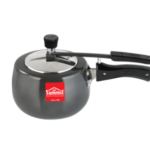Shoulder and arm pain can significantly affect your ability to perform daily tasks, from lifting objects to simply reaching for things. It can result from various causes, such as muscle strain, injuries, poor posture, or conditions like frozen shoulder and rotator cuff injuries. Fortunately, physiotherapy offers effective exercises to relieve pain, restore range of motion, and strengthen muscles.
In this article, we’ll explore some of the Best Physiotherapist In Muscat exercises to alleviate shoulder and arm pain and improve mobility.
Common Causes of Shoulder and Arm Pain
Before starting physiotherapy exercises, it’s essential to understand the underlying causes. Some of the common culprits include:
- Rotator cuff injuries
- Frozen shoulder (adhesive capsulitis)
- Tendonitis or bursitis
- Shoulder impingement
- Poor posture leading to muscle imbalance
- Post-surgical recovery
- Overuse or repetitive strain injuries
Once your physiotherapist has identified the cause of your pain, they can guide you through specific exercises to relieve symptoms and prevent future discomfort.
Pendulum Stretch
Purpose: Helps relieve stiffness and increases flexibility in the shoulder joint.
How to Perform:
- Stand with your unaffected arm resting on a table for support.
- Let the affected arm hang down freely.
- Gently swing the arm in small circles, first clockwise and then counterclockwise.
- Repeat 10 times in each direction.
Tip: As the pain reduces, try to increase the circle’s size slightly.
Wall Crawls (Finger Walks)
Purpose: Improves shoulder range of motion by gently stretching the muscles and tendons.
How to Perform:
- Stand facing a wall at arm’s length.
- Use the fingers of the affected arm to “walk” up the wall slowly, as high as you can without pain.
- Hold the position for a few seconds, then slowly walk your fingers back down.
- Repeat 5–10 times.
External Rotation with Resistance Band
Purpose: Strengthens the rotator cuff muscles to support the shoulder joint.
How to Perform:
- Anchor a resistance band to a door handle or sturdy object.
- Hold the band with the affected arm, keeping the elbow bent at 90 degrees and close to your side.
- Slowly pull the band away from your body (external rotation), keeping the elbow steady.
- Return to the starting position and repeat for 10–12 reps.
Shoulder Shrugs
Purpose: Relieves tension in the upper trapezius muscles, which often contribute to shoulder pain.
How to Perform:
- Stand or sit comfortably with your arms at your sides.
- Slowly lift your shoulders towards your ears, then hold for a second.
- Lower your shoulders back down and repeat 10–12 times.
Tip: Perform this exercise with light dumbbells to increase difficulty as the pain subsides.
Sleeper Stretch
Purpose: Increases flexibility of the shoulder muscles and improves internal rotation.
How to Perform:
- Lie on your side, with the affected shoulder underneath and the arm extended at a 90-degree angle.
- Use your other hand to gently push the forearm of the affected arm downward.
- Hold the stretch for 20–30 seconds.
- Repeat 3–5 times.
Scapular Squeeze
Purpose: Strengthens the muscles between your shoulder blades, promoting better posture and stability.
How to Perform:
- Sit or stand with your back straight.
- Squeeze your shoulder blades together, as if you are trying to hold a pencil between them.
- Hold the position for 5 seconds, then release.
- Repeat 10–12 times.
Isometric Shoulder Press
Purpose: Builds strength in the shoulder muscles without requiring movement, making it ideal for pain management.
How to Perform:
- Stand next to a wall, with your affected arm bent at the elbow.
- Gently push your arm against the wall, engaging the shoulder muscles but without moving your arm.
- Hold for 5–10 seconds, then release.
- Repeat 10 times.
Cross-Body Stretch
Purpose: Relieves tension in the back of the shoulder and increases flexibility.
How to Perform:
- Bring your affected arm across your chest.
- Use the other arm to gently pull it closer to your chest.
- Hold the stretch for 20–30 seconds.
- Repeat 3–5 times.
Doorway Stretch
Purpose: Opens the chest and stretches the front of the shoulders, relieving tension and improving posture.
How to Perform:
- Stand in a doorway with both hands on the doorframe at shoulder height.
- Step forward with one foot until you feel a gentle stretch in your shoulders and chest.
- Hold the stretch for 20–30 seconds.
- Repeat 2–3 times.
Arm Circles
Purpose: Increases blood flow to the shoulder area, improving flexibility and reducing stiffness.
How to Perform:
- Stand with your arms extended out to the sides at shoulder height.
- Make small circles with your arms, rotating clockwise for 10–15 seconds.
- Reverse the direction and rotate counterclockwise.
- Repeat 2–3 times.
Tips for Safe Exercise Practice
- Warm-up first: Start with light movements to increase blood flow and prepare your muscles.
- Listen to your body: Stop any exercise that causes sharp pain or discomfort.
- Consistency is key: Perform these exercises regularly for the best results.
- Consult a physiotherapist: If the pain persists or worsens, seek professional guidance for personalized treatment.
When to See a Physiotherapist
If shoulder or arm pain continues despite regular exercises or if the pain interferes with daily activities, it’s essential to consult a physiotherapist. They can assess your condition and create a tailored exercise plan to address the root cause of your pain.
Conclusion
Shoulder and arm pain can be debilitating, but with the right physiotherapy exercises, you can regain strength, flexibility, and range of motion. Exercises like wall crawls, shoulder shrugs, and resistance band workouts not only relieve pain but also prevent future injuries. Incorporating these simple exercises into your daily routine can promote long-term recovery and improve your overall well-being.
Always remember to listen to your body and seek help from a physiotherapist if the pain persists. With consistency and the right approach, you’ll be on your way to pain-free shoulders and arms in no time.







